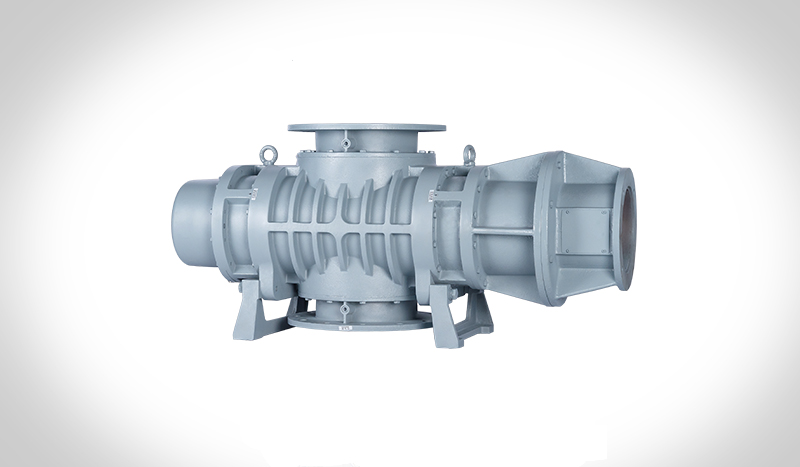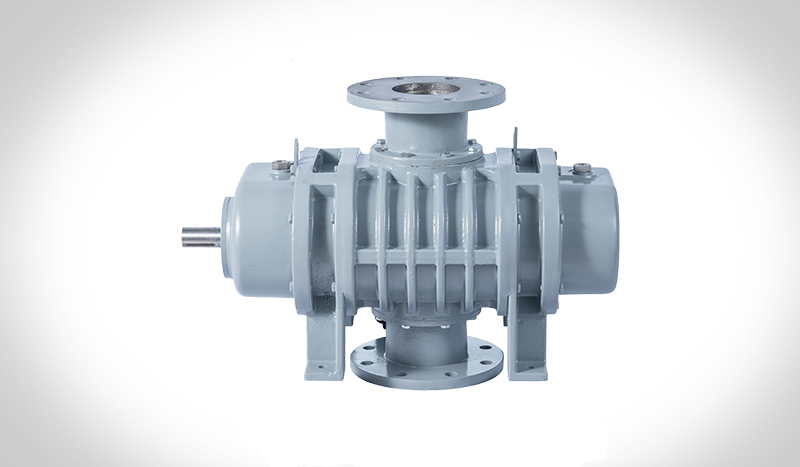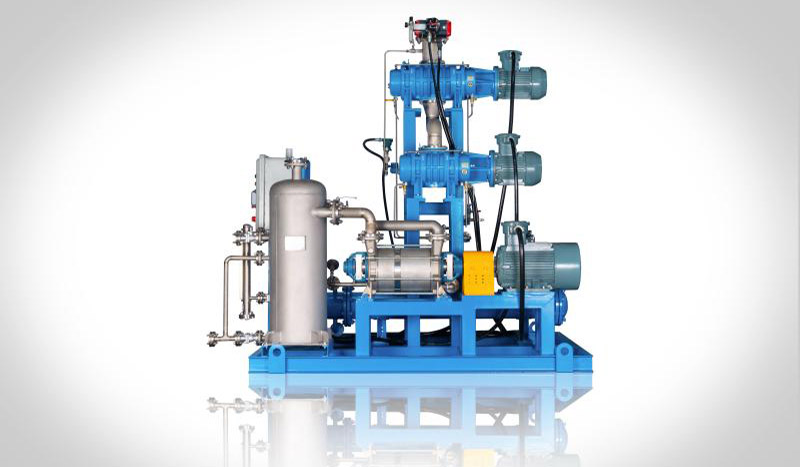Blog
Positive Displacement Pump vs Centrifugal Pumps
When it comes to pumping fluids, there are two types of pumps that are commonly used: centrifugal pumps and positive displacement pumps. Both types have their unique benefits and drawbacks, and choosing the right one for your application is crucial. In this blog post, we will delve into these two types of pumps and compare their mechanics, performance, handling viscosity, suction lift considerations, practical applications, quality, and durability. We will also provide essential factors to consider when selecting a pump for industrial use to ensure you choose the right one for your needs. So whether you’re in the market for a new pump or just curious about how they work, keep reading to learn more about positive displacement pumps vs centrifugal pumps.
Understanding Centrifugal Pumps
Centrifugal pumps harness kinetic energy to transfer fluids, utilizing a spinning impeller to generate centrifugal force and create a flow rate. These pumps are well-suited for applications requiring high flow rates and low pressures, effectively handling large quantities of gas and liquid treatment. The fluid is discharged through a pipe, showcasing the efficiency of centrifugal pumps in various industrial and commercial settings. Their ability to handle gas and liquid mixtures, along with their smooth flow, makes them ideal for diverse applications.
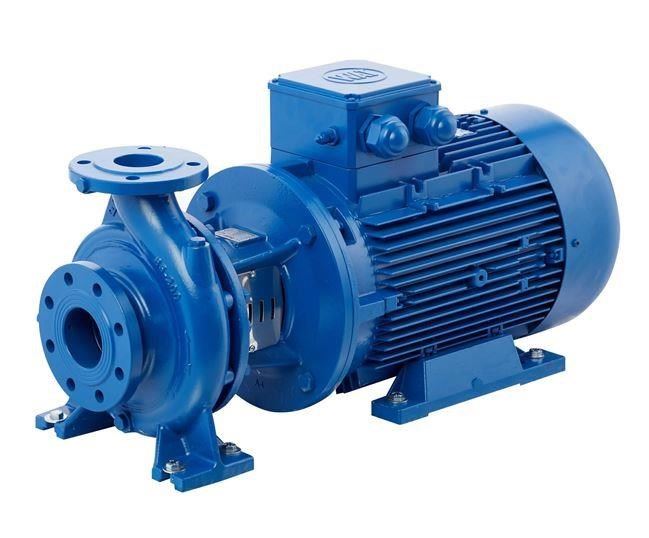
Definition and Working Mechanism
Centrifugal pumps harness rotational energy to facilitate fluid movement, converting this energy into kinetic energy for water supply pumping. These pumps specifically utilize centrifugal force for fluid discharge and draw in fluids through the inlet side. It’s important to note that the efficiency of centrifugal pumps is influenced by frictional losses and pressure changes within the system. The rotational energy they rely on ultimately impacts their effectiveness in fluid transportation.
Advantages of Centrifugal Pumps
Centrifugal pumps offer numerous advantages for various applications. These pumps are well-suited for handling thin liquids and are ideal for processes requiring a constant flow rate. Their ability to provide smooth fluid flow, along with lower maintenance requirements, makes them highly desirable for industrial use. Additionally, centrifugal pumps are the best choice for applications involving high flow rates and low viscosity levels, further expanding their utility across different industries such as water supply and food processing. The efficiency of positive displacement pumps, types of positive displacement pumps, and the differences in mechanics and performance variances between standard centrifugal pumps and positive displacement pumps highlight the distinct advantages of centrifugal pumps.
Delving into Positive Displacement Pumps
Positive displacement pumps offer a consistent flow rate irrespective of pressure changes, making them efficient for pumping viscous fluids and sensitive products. These pumps are highly suitable for low flows and highly viscous fluids, discharging the fluids through a discharge point. However, they are sensitive to pressure differential and suction lift. With various types available, including rotary positive displacement pumps like progressive cavity pumps, they find different applications depending on fluid characteristics, pressure differentials, and viscosity levels. When compared to standard centrifugal pumps, positive displacement pumps require lower maintenance due to their lower speed and lower shear, but may not be as effective for high flow rates or thin liquids.
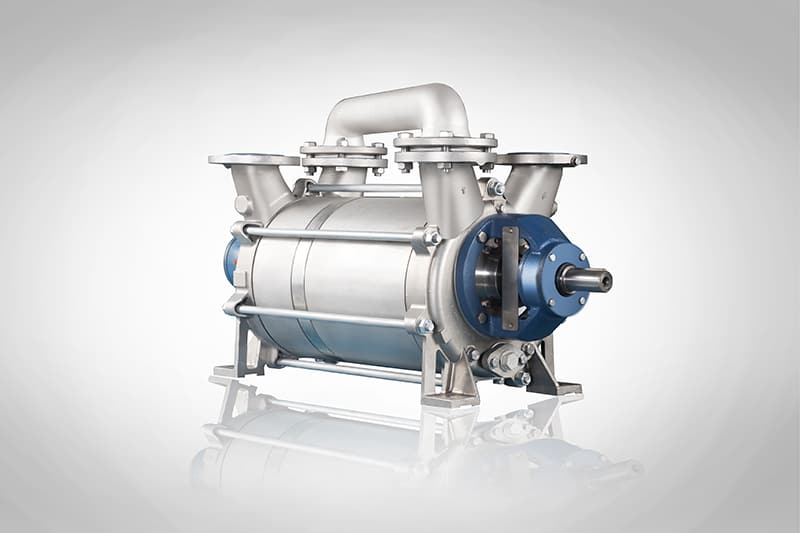
Definition and How They Function
Positive displacement pumps operate by creating pressure differentials to effectively move fluids. They utilize a rotating axis to move fluids in opposite directions, making them suitable for applications involving thick oils and lubrication oils. These pumps are sensitive to changes in fluid characteristics, discharging fluids through the discharge port under positive pressure. This mechanism makes them highly efficient for pumping viscous fluids and sensitive products. Additionally, they are especially sensitive to pressure changes and suited for low flows and highly viscous fluids. The rotational energy created by the spinning impeller helps in discharging large quantities of gas, making positive displacement pumps a standard choice for various applications.
Benefits of Positive Displacement Pumps
Positive displacement pumps offer several advantages in various applications. These pumps are the best choice for handling sensitive fluids, making them ideal for industries such as liquid treatment, food processing, and water supply. With their low shear operation, positive displacement pumps are efficient for handling highly viscous fluids, like thick oils and lubrication oils. They are also suitable for low pressure installations and sensitive applications. Additionally, these pumps deliver a constant flow rate regardless of pressure changes, making them optimal for applications requiring a smooth and constant flow.
Comparing Centrifugal Pumps and Positive Displacement Pumps
Centrifugal pumps utilize kinetic energy and spinning impellers to move fluids, while positive displacement pumps deliver a constant flow rate, unaffected by pressure changes. The discharge of fluids from centrifugal pumps occurs through a discharge pipe, whereas positive displacement pumps discharge fluids through a positive pressure discharge point. These pump types differ in performance, fluid characteristics, and efficiency, offering distinct advantages based on the application’s requirements. Centrifugal pumps are suitable for high flow rates and low viscosity levels, whereas positive displacement pumps excel in handling highly viscous fluids and maintaining a constant flow. Understanding these key differences is crucial for selecting the most suitable pump for specific industrial applications.
Differences in Mechanics
Centrifugal pumps harness centrifugal force and kinetic energy for fluid movement. Conversely, positive displacement pumps generate pressure differentials and utilize a rotating axis to pump fluids. Centrifugal pumps rely on a spinning impeller and discharge pipe, while positive displacement pumps employ a rotating axis and discharge port for fluid transfer. The operational mechanics of both types of pumps differ significantly, with distinct methods for fluid propulsion and discharge. These differences in mechanics contribute to the unique performance variances, fluid-handling capabilities, and efficiency of positive displacement pumps and standard centrifugal pumps.
Performance Variances
Centrifugal pumps excel in handling high flow rates and are ideal for low-pressure installations, making them suitable for applications requiring large quantities of gas and liquid treatment. In contrast, positive displacement pumps deliver a constant flow rate irrespective of pressure changes and are highly efficient for pumping viscous fluids and sensitive products. Their lower speed and robust design make them the best choice for managing highly viscous or shear-sensitive fluids. Both types of pumps exhibit distinct performance variances, catering to different applications based on fluid characteristics, pressure differentials, and efficiency considerations.
Handling Viscosity
When selecting pumps for different applications, considering the handling of viscosity is crucial. Centrifugal pumps are ideal for thin liquids and water supply, best suited for high flow rates and low pressures. On the other hand, positive displacement pumps efficiently handle highly viscous fluids and lubrication oils, delivering a constant flow rate regardless of pressure changes. Their ability to excel in applications involving thick oils and highly viscous fluids sets them apart. Understanding the viscosity handling capabilities of these pumps is essential when making the right choice for specific fluid characteristics and applications.
Suction Lift Considerations
Suction lift directly impacts the performance of both pump types, playing a crucial role in their efficiency. While standard centrifugal pumps have limitations in handling suction lift applications, positive displacement pumps excel in such scenarios. The ability to handle suction lift better makes positive displacement pumps the ideal choice for applications with low pressure installations and the need to pump large quantities of gas or highly viscous fluids. Understanding suction lift is imperative as it influences the selection of the appropriate pump type based on the fluid characteristics, ensuring optimal performance without compromising efficiency.
Practical Applications of Both Pump Types
Centrifugal pumps excel at moving large quantities of fluid, making them ideal for applications involving high flow rates and low pressures. On the other hand, positive displacement pumps are best suited for applications requiring high pressure and constant flow, making them the go-to choice for handling highly viscous fluids and sensitive products. Understanding the fluid characteristics and pressure differentials is crucial in determining the type of pump suitable for a particular application. Efficient fluid handling hinges on the selection of the right pump type based on the specific requirements of the industrial processes, underscoring the importance of proper pump selection to ensure optimal operational performance.

When to Choose Centrifugal Pumps
Centrifugal pumps are a popular choice for low viscosity fluid applications where constant flow rates are necessary. They perform exceptionally well in installations requiring high flow and low pressure, making them ideal for water supply and wastewater treatment processes. These pumps are excellent at transferring kinetic energy and offer optimal performance when used in the appropriate applications. It is essential to understand the specific requirements of using centrifugal pumps to ensure seamless operations and maximize efficiency. Proper selection, installation, and maintenance of these pumps can help you achieve optimal results and improve your overall pumping system’s performance.
When to Opt for Positive Displacement Pumps
Positive displacement pumps offer significant advantages in handling highly viscous fluids effectively, making them the ideal choice for such applications. Their constant flow rate is particularly beneficial for transferring sensitive products and shear-sensitive fluids like food products. Moreover, positive displacement pumps play a crucial role in liquid treatment processes, where maintaining a consistent flow is essential. Additionally, these pumps are favored in applications where pressure changes are a concern, further highlighting their versatility and reliability. The efficiency of positive displacement pumps, especially in handling fluid characteristics and pressure differentials, makes them a preferred option for various industries and liquid transfer systems.
Quality and Durability in Pump Selection
Selecting pumps based on quality and durability is essential in ensuring efficient and reliable fluid handling. Understanding pump construction materials aids in the proper selection of pumps, impacting maintenance requirements. Proper pump selection considers factors such as pump efficiency and lifespan, crucial for long-term performance. Quality pumps with the right materials can significantly reduce maintenance needs, especially for low-maintenance requirements applications. It’s vital to choose pumps that align with the fluid characteristics and operational demands for maximum durability and reliability.
Essential Factors to Consider
When selecting a pump, fluid characteristics significantly impact the choice. Variations in viscosity levels and flow requirements are crucial considerations that guide pump selection. Additionally, pressure differentials greatly influence the decision between pump types. Understanding these essential factors ensures optimal pump performance and longevity. By taking into account the specific fluid characteristics, such as viscosity and flow requirements, as well as the pressure differentials, one can make an informed choice that aligns with the operational needs. Efficient pump selection based on these critical factors results in reliable and long-lasting fluid handling systems.
Are All Industrial Pumps Created Equal?
When it comes to industrial pumps, there is no one-size-fits-all solution. The performance, efficiency, and suitability of pumps can vary greatly depending on the specific industrial application. It is crucial to understand these differences in order to choose the best pump type for efficient fluid handling. Each pump type has its own set of unique characteristics and applications that make them suitable for certain situations. Factors like flow rate, pressure requirements, and fluid viscosity all play a role in determining which pump type will work best for a particular application. By understanding these differences and selecting the right pump type, industries can ensure optimal performance and efficiency while minimizing maintenance costs and downtime.
Conclusion
In conclusion, both centrifugal pumps and positive displacement pumps have their own unique advantages and are suitable for different applications. Centrifugal pumps are ideal for high flow rate, low viscosity applications, while positive displacement pumps are more suitable for handling viscous fluids and maintaining a constant flow rate. When selecting a pump for your specific needs, it is crucial to consider factors such as operating conditions, fluid properties, and desired performance. Remember to choose a pump that meets the quality and durability requirements of your application to ensure efficient and reliable operation. If you need assistance in selecting the right pump for your needs, reach out to us for a customized quote.
Contact Our Support Team

